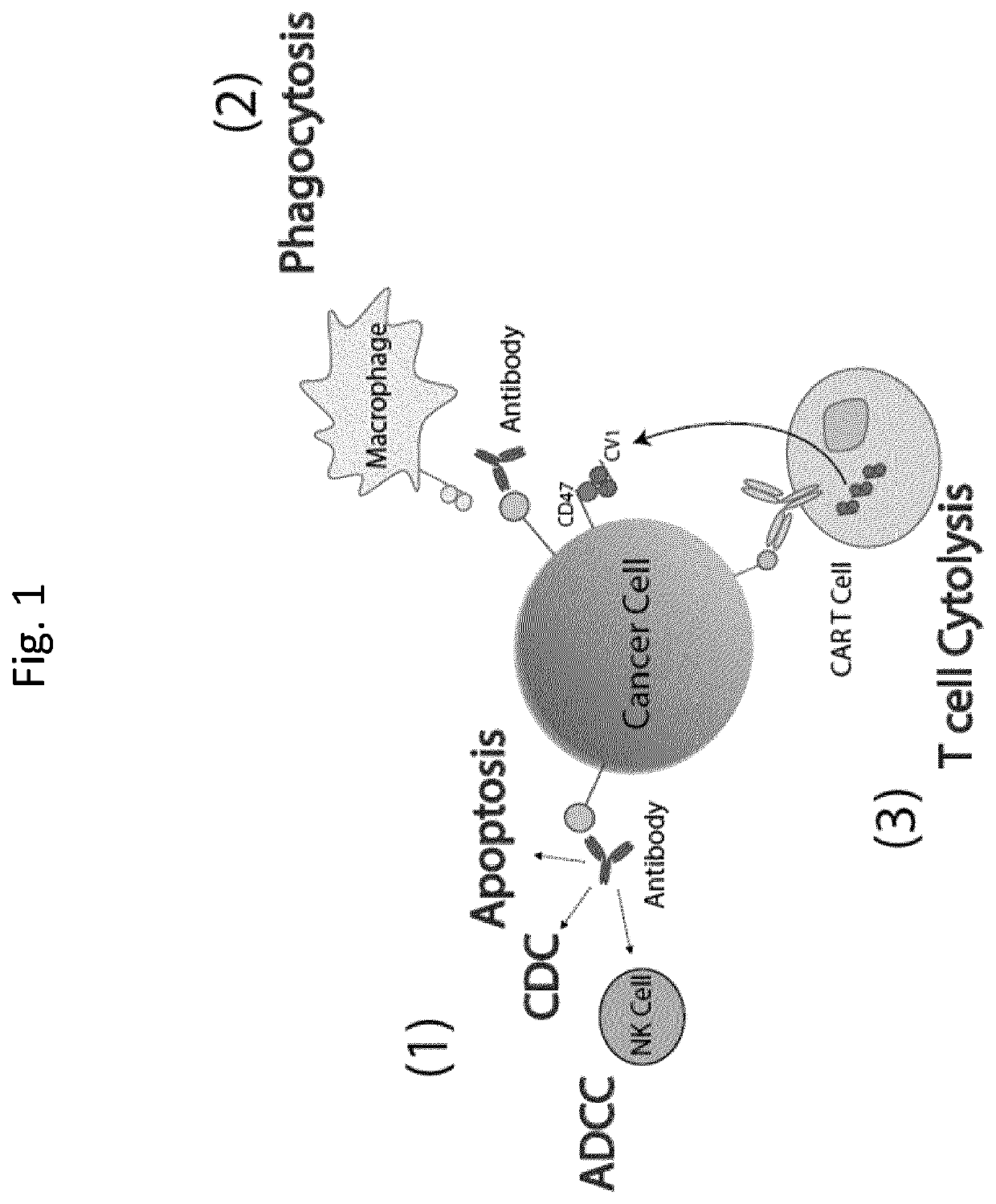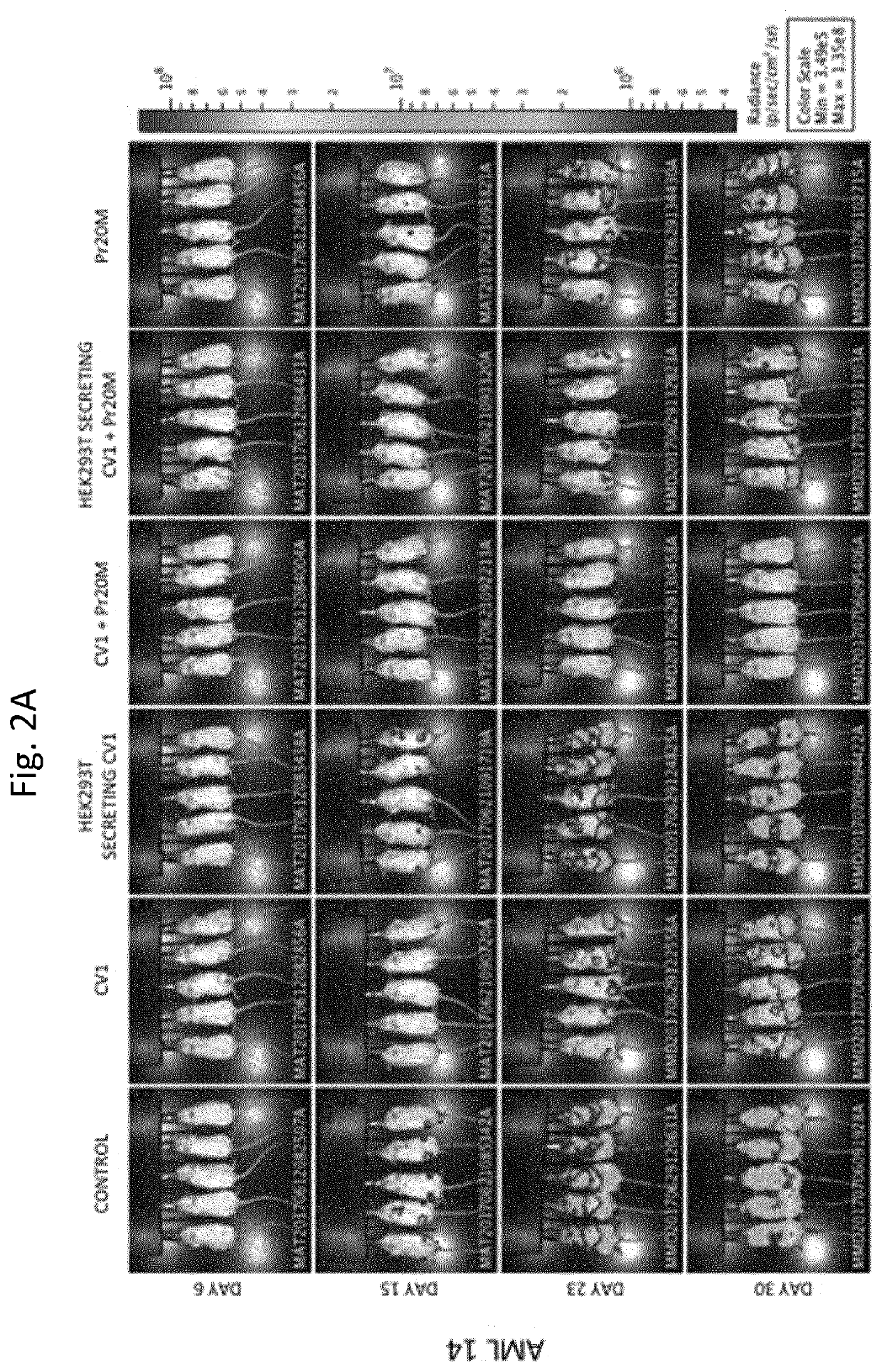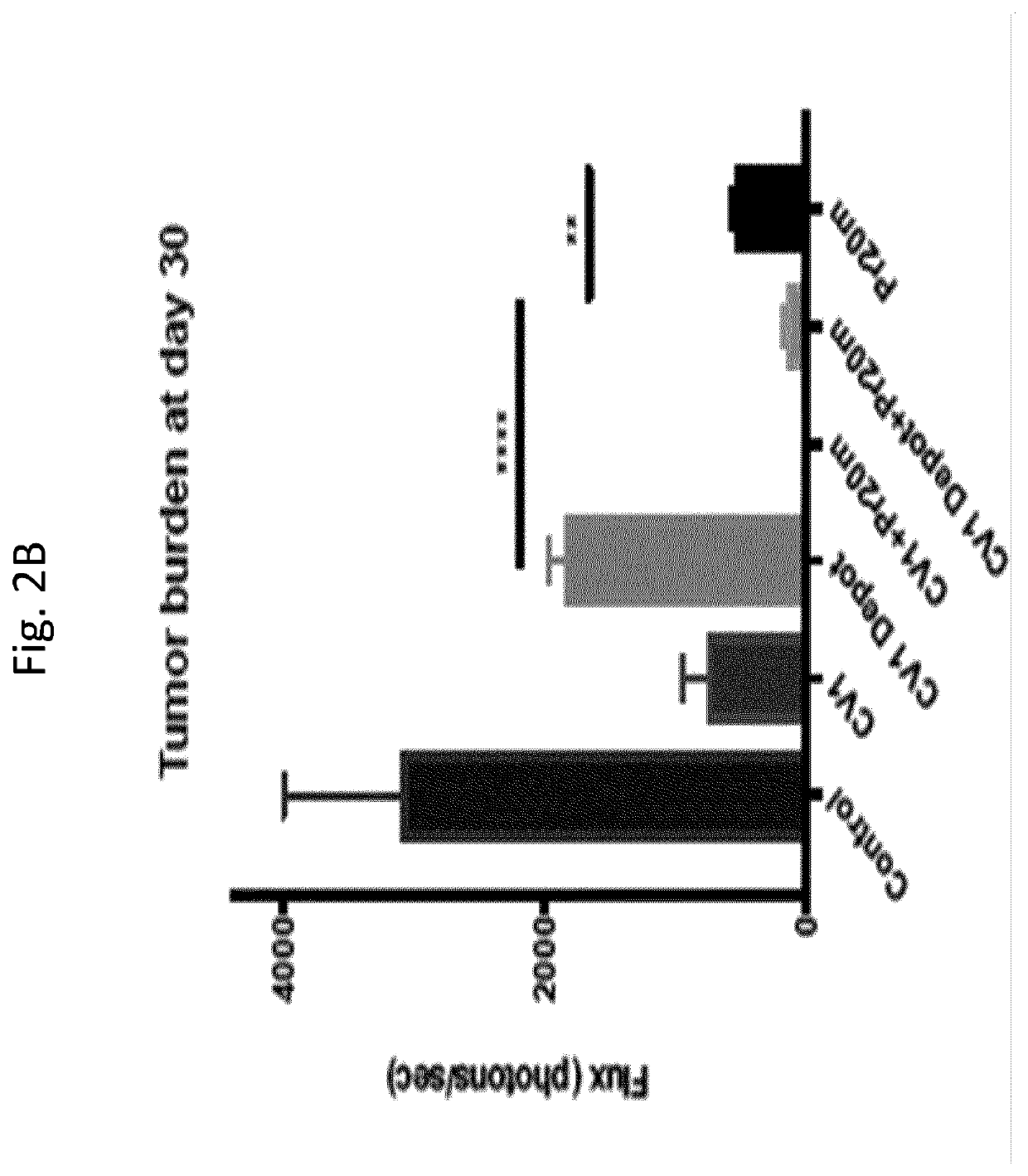Compositions and methods for adoptive cell therapy for cancer
a cancer and cell therapy technology, applied in the field of compositions and methods of adoptive cell therapy for cancer, can solve the problems of little success in treating solid tumors, cd47 trial toxicities, and significant complications of antigen-negative tumors for patients
- Summary
- Abstract
- Description
- Claims
- Application Information
AI Technical Summary
Benefits of technology
Problems solved by technology
Method used
Image
Examples
example 1
creted in an Active Form by Engineered Human Cells
[0296]To determine the feasibility of genetically encoding CV1 into CAR T cells for local secretion, whether CV1 could be encoded into a human cell and then secreted in an active form was first tested. HEK293T cells were used as a first model. The HEK293T cells were transduced with the gene for CV1, which was expressed, and secreted, as determined by PCR and western blot. Second, the effectiveness of the secreted cellular construct in vivo was tested.
[0297]Mice were engrafted via tail vein injection with 3 million cells / mouse of AML 14 transduced to express Luciferase-GFP and were randomized such that each group had equal mean engraftment and treated beginning day 6. The 6 treatment groups were: 1) Tumor only, 2) daily 100 μg CV1 intraperitoneally (IP) alone, 3) single dose IP of HEK293T secreting CV1 alone, 4) daily 100 μg CV1 IP+BIW 50 μg Pr20M antibody IV, 5) single dose IP of HEK293T secreting CV1+50 μg BIW Pr20M antibody, 6) 50 ...
example 2
ion of OrexiCAR T Cells Expressing a Chimeric Antigen Receptor in Combination with a Secretable CV1 Protein
[0299]This Example describes the construction of a cell that expresses a CAR (e.g., with an antigen-binding domain specific for MUC16, WT1, or mesothelin). CAR T cells reactive with MUC16, WT1, mesothelin have been described (Brentjens et al., Sci Transl Med 5(177):177ra38 (2013); Pegram et al., Leukemia 29(2):415-22 (2015); Rafiq et al., Leukemia 31(8):1788-1797 (2017); Zeltsman et al., Transl Res. 187:1-10 (2017); Adusumilli et al., Sci Transl Med 6(261):261ra151 (2014); Koneru et al., J Transl Med 13:102 (2015); Chekmasova et al., Clin Cancer Res. 16(14):3594-606 (2010)). Following transduction, CAR expression is verified by flow cytometry, staining for the scFv incorporated into the CAR T cell, and western blot. To generate the CV1-secreting OrexiCAR variants of these CAR T cells, CV1 is cloned and inserted downstream of the CD3-ζ chain, separated by a self-cleaving P2A pep...
example 3
of OrexiCAR T Cells in Mice in Combination with Antibody Therapy
[0301]The ability of OrexiCAR T cells (e.g., OrexiCAR T cells expressing CARs with an antigen-binding domain specific for MUC16, WT1, or mesothelin) to eradicate tumors in vivo is assessed using preclinical xenogeneic murine models in accordance with IACUC protocols. SCID-Beige or NSG mice are inoculated with tumor cells modified to express luciferase. Mice are subsequently treated with a systemic infusion of OrexiCAR or control CAR cells. The antibodies are matched for the CAR target and include, e.g., human mAbs to Her2, CD33, EGFR, and WT1, all of which are available and active in models; negative control antibodies are used as well. Dose response to numbers of CARs and antibodies is determined to find the optimal number of cells to infuse and the concentration of antibody. Macrophages in the mice are sufficient (Mathias et al., Leukemia 31(10):2254-2257 (2017)). Disease progression is monitored both clinically and w...
PUM
| Property | Measurement | Unit |
|---|---|---|
| temperatures | aaaaa | aaaaa |
| temperatures | aaaaa | aaaaa |
| temperatures | aaaaa | aaaaa |
Abstract
Description
Claims
Application Information
 Login to View More
Login to View More - R&D
- Intellectual Property
- Life Sciences
- Materials
- Tech Scout
- Unparalleled Data Quality
- Higher Quality Content
- 60% Fewer Hallucinations
Browse by: Latest US Patents, China's latest patents, Technical Efficacy Thesaurus, Application Domain, Technology Topic, Popular Technical Reports.
© 2025 PatSnap. All rights reserved.Legal|Privacy policy|Modern Slavery Act Transparency Statement|Sitemap|About US| Contact US: help@patsnap.com



